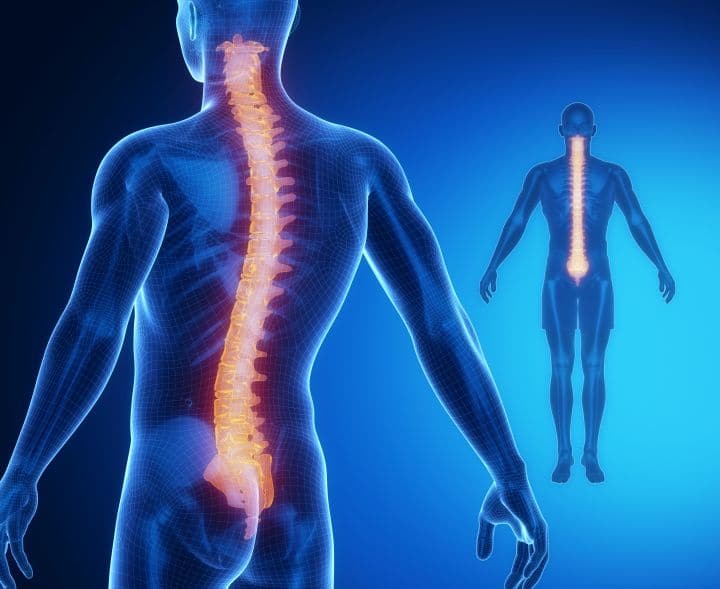
Living with chronic pain can be a challenging journey, often accompanied by unanswered questions and a search for answers. One rare condition that may be causing your persistent pain is adhesive arachnoiditis. Although its name may sound daunting, understanding this condition can empower you with knowledge and open doors to potential relief. In this article, we will delve into the world of adhesive arachnoiditis, exploring its causes, symptoms, diagnosis, and treatment options. Remember, while chronic pain may seem overwhelming, there is always hope for better days ahead.
What is Adhesive Arachnoiditis?
Adhesive arachnoiditis is a rare disorder characterized by inflammation of the arachnoid, a delicate membrane surrounding the spinal cord and brain. This inflammation can lead to the formation of scar tissue, which causes the nerves within the spinal canal to stick together. As a result, chronic pain and other debilitating symptoms may arise.
Understanding the Symptoms:
The symptoms of adhesive arachnoiditis can vary from person to person. Some individuals may experience persistent pain localized in the back, legs, or arms. Others may encounter numbness, tingling, or weakness in these areas. Additionally, adhesive arachnoiditis can manifest as muscle cramps, spasms, or shooting pains. It’s essential to remember that symptoms may fluctuate over time and can be influenced by various factors, including physical activity, stress, or weather changes.
Causes and Risk Factors:
Adhesive arachnoiditis can be caused by a variety of factors. These may include spinal surgeries, invasive spinal procedures, spinal infections, trauma, or the use of certain medications. Although anyone can develop adhesive arachnoiditis, there are certain risk factors that may increase the likelihood. These include multiple spinal procedures, previous spinal infections, and the use of certain substances, such as oil-based myelographic contrast agents.
Diagnosis:
Diagnosing adhesive arachnoiditis can be challenging, as its symptoms often overlap with other conditions. However, with the help of a skilled healthcare professional, an accurate diagnosis can be achieved. Typically, the diagnostic process includes a comprehensive review of your medical history, a thorough physical examination, and the utilization of imaging techniques such as magnetic resonance imaging (MRI) or computed tomography (CT) scans. Additionally, your doctor may order a nerve conduction study or a spinal tap to further evaluate your condition.
Treatment Options:
Although there is no definitive cure for adhesive arachnoiditis, various treatment options are available to manage its symptoms and improve your quality of life. The primary goal of treatment is to reduce pain, enhance function, and increase your overall well-being. Your healthcare provider may recommend a multidisciplinary approach, which may include:
- Pain Management: Medications, both oral and topical, can be prescribed to alleviate pain associated with adhesive arachnoiditis. These may include analgesics, anti-inflammatory drugs, muscle relaxants, or nerve pain medications. In some cases, nerve blocks or epidural injections may also be considered to provide temporary relief.
- Physical Therapy: A skilled physical therapist can guide you through exercises and techniques to improve strength, flexibility, and posture. Physical therapy aims to reduce pain, enhance mobility, and promote an active lifestyle.
- Psychological Support: Chronic pain can take a toll on one’s emotional well-being. Seeking counseling or participating in support groups can provide valuable coping strategies, reduce stress, and foster a positive mindset.
- Alternative Therapies: Complementary approaches such as acupuncture, chiropractic care, or massage therapy may offer additional relief for some individuals. These therapies focus on reducing pain, promoting relaxation, and improving overall well-being.
- Assistive Devices: In certain cases, assistive devices like braces, splints, or canes may be recommended to support your affected limbs and improve mobility.
Living Optimistically with Adhesive Arachnoiditis:
While adhesive arachnoiditis can present challenges, it’s important to remember that you are not alone in your journey. Connecting with others who share similar experiences can offer support, empathy, and valuable insights. Online communities, support groups, and patient advocacy organizations can be great resources to find solace and guidance.
Moreover, it is crucial to maintain a positive mindset and practice self-care. Engaging in activities that bring you joy, practicing relaxation techniques, and taking care of your physical and emotional well-being are vital components of managing chronic pain.

Seeking Hope and Encouragement:
Living with adhesive arachnoiditis may feel overwhelming at times, but it’s important to remain hopeful. Advances in medical research are constantly uncovering new treatment options and strategies for managing chronic pain. Stay informed, keep an open line of communication with your healthcare provider, and never hesitate to seek a second opinion.
Remember, you are more than your pain. Surround yourself with a support system that understands and uplifts you. Celebrate small victories, focus on the things you can control, and nurture a positive outlook for the future.
Conclusion:
While adhesive arachnoiditis is a rare condition associated with chronic pain, understanding its causes, symptoms, diagnosis, and treatment options can provide a glimmer of hope. By working closely with your healthcare provider and adopting a multidisciplinary approach, you can take steps towards managing your pain, improving your quality of life, and finding moments of joy. Remember, you are resilient, and together, we can navigate the challenges of chronic pain and build a brighter future.
